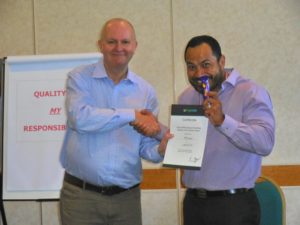Universal Data Skills
This course has the potential to revolutionise the way data is used in your organisation. Far too often, data used at a senior level is geared up for reporting purposes, often aimed at a regulatory body. This can mean that the data needed to improve the organisation is not being collected or used.
Universal Data Skills works at both a strategic and tactical level. How to use data to set and measure the progress of strategy and KPIs sits alongside what type of graph is best used to display this. It is this blend of good theory and practical application put together in a straightforward framework that makes Universal Data Skills unique.
Duration and who should attend
Duration
3 days
Who should attend?
• Chief Executives, Directors, senior and middle managers
• Anyone involved in setting strategy
• Anyone involved in performance measurement at a departmental or organisational level
• Analysts and statisticians
This course is ideal for graduates of Universal Improvement Skills and the Strategic Improvement Programme – it is a requirement that participants must have attended one of these or the Facilitator Development Programme beforehand.
A brief overview of the course
Day 1
- Scene setting
- The Experiment on the Red Beads – as run by Dr W. Edwards Deming on his 4 day seminars
- Twelve principles that underpin the use of data in organisational improvement
- An introduction to variation and the difference between Common Causes and Special Causes. How variation affects your processes and how to use SPC to go about reducing this to guarantee predictability and reliability.
Day 2 – Statistical Process Control
- The history
- The Funnel Experiment – another of Dr Deming’s classics, this one to illustrate the dangers of tampering with stable processes
- Process Behaviour Charts (also known as Control Charts), the Standard Deviation, calculating Control Limits and looking for patterns in the resulting data – nothing special going on, blips, shifts, drifts, chaos
- Process Capability and targets
- How to use Pareto Charts and Ishikawa Diagrams in the context of data analysis
- Bad practices exposed, how a ‘common sense’ approach to using data may be ruining your organisation
- How to use data in projects – both steering (particularly how to identify projects) and doing
- How to collect, display and analyse customer satisfaction data
Day 3
- Better use of graphs including tips for good graphs
- How to select and use the best graph to present your data including:
- Run Charts
- Histograms
- Bar Charts
- Pareto Charts
- Area Charts
- The deadly sins of data display
- The four interdependent activities when using data for improvement: collection, display, analysis and reporting
- Dashboards – what they are, where the ideas come from, how to design and use them
- If you are able to provide some real data from your organisation, we will use that to illustrate many of these


